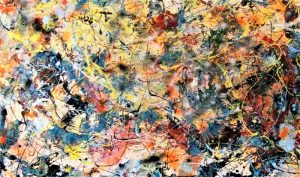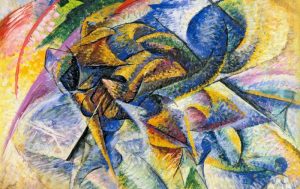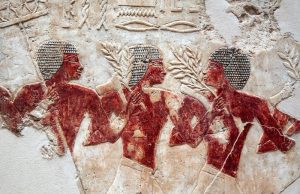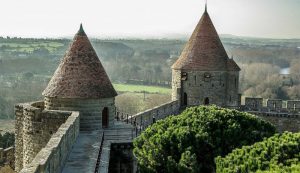Painting techniques
In order to carry out an adequate descriptive study of a given piece of art, it is extremely important to consider all the technical aspects and materials with which the work could be done. The materials are all those tools with which the artist is able to draw, paint or sculpt. Then, we can understand by artistic painting technique, the sum of all the procedures and processes that are part of the construction of the work of art. These procedures are all different for each of the different artistic languages that exist.
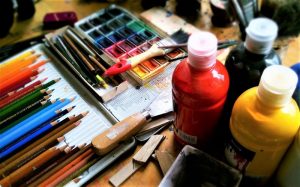
Related topics
Watercolor, charcoal, oil
What are painting techniques?
Painting techniques are the different forms that are made specifically to apply the material that will be used by the artist to create a particular work of art.
Artistic painting techniques
The painting techniques are very varied and among them we have the following ones:
- Oil: this is the painting technique best known worldwide by professional artists and beginners, it is not a very difficult technique to conquer and many artists that practice can be captured through their brush strokes, their ideas, memories and activities. The most recognized ways to apply oil are through a canvas, brushes and spatulas. It is a painting that does not last long to dry, and its colors can be combined even on the same canvas and is in short, a very versatile technique for anyone who wants to paint.
- Watercolor: this is probably the most difficult technique to learn and put into practice. It uses water-based paints that require careful preparation. In this technique, you can use a special paper as a support and you should be concerned because the paint does not dry or cut because it could produce unintentional stains that take beauty away from the work and at the same time, are very difficult to camouflage.
- Acrylic: this technique is quite similar to what we do when we paint with oil. Acrylic paint should be dissolved in water and is quite easy to apply. It has the advantage that, like oil, acrylic can be applied in a simple way in one layer over another, making you able to rectify our works easily in case of a mistake. In this technique we can also use the spatula in an interesting way to start with our artworks.
- Charcoal and pastel: they are applied mainly on special paper, which allows to mix colors in the own support and also they can be eliminated in a simple way with a rag, allowing us to create very interesting stain effects.
- Graffito: it is a procedure that consists of making small incisions on the body of an object or wall, so that, the lower layer is exposed, which is of another color. Generally, templates are used to obtain geometric repetition motifs.
- Encaustic: it is characterized by using wax as an adhesive for pigments, a mixture that has effects that cover quite a lot, it is dense and creamy. The paint is applied with a brush or a hot spatula.
Painting techniques for children
- From 5 to 8 years old: children must begin to know the colors and their mixtures by applying them in impressionist and expressionist paintings which are easy to interpret for the youngest children, since their brushstrokes are simple, and their colors are simple.
- From 7 to 8 years old: acrylic is used as a second brush technique. You can also add painting techniques such as charcoal, pastel, watercolor, collage, etc. always adapting these techniques to your possibilities. In this stage, the child learns to mix colors and techniques in order to make his first abstract paintings and to know different textures.
- From 9 to 14 years: in these ages and depending on the teaching, they already know the colors and mixtures, which is why they are taught making pictures and drawings. With older children we get to know all the pictorial techniques appropriate to their age except oil, pictorial technique par excellence but toxic to children by their means. From watercolor, charcoal, pastel, Chinese ink, to material painting, must be taught to learn that art techniques can be joined, respecting the particularity of each material.
Wall painting techniques
- Sponge technique: apply the paint with a sponge giving small blows on the surface, achieving an optical effect finish of depth and volume. The sponge should be wet and applied to the wall.
- Mopping technique: the paint is applied on the wall through a brush and then, with the help of a wrinkled cloth is spread. It is special for use on imperfect surfaces. It is done with two people at the same time, while one paints, the other spreads the paint with the rag.
- Brush technique: wet the paint brush and hit another that is dry with the aim of splashing the wall color.
- Marble technique: seeks to achieve a finish that imitates marble, is quite laborious and first applies a layer of paint on a smooth color and before it dries, a rag is wiped to prevent deformities in the paint, then using a brush, draws irregular lines similar to those of marble.
- Stucco technique: made with a paste of lime and marble and is a type of coating for smooth walls that forms different textures and is generated by mixing materials such as plaster, powdered marble, slaked lime and certain pigments.
- Lacquered technique: it is done with a varnish or enamel on the walls or furniture to give a smooth and soft finish to the touch. This painting technique on walls is perhaps the most complicated to apply, as it requires a completely smooth wall without imperfections.
- Crackle or Quartering Technique: it is used above all to paint wooden surfaces and give them an old effect.
How to cite this article?
Briceño V., Gabriela. (2019). Painting techniques. Recovered on 23 February, 2024, de Euston96: https://www.euston96.com/en/painting-techniques/



